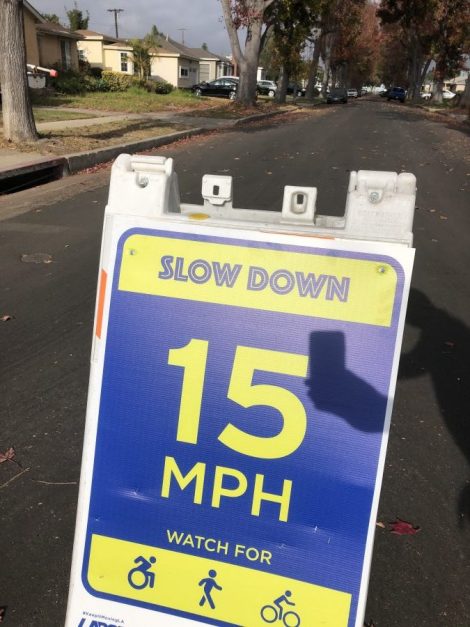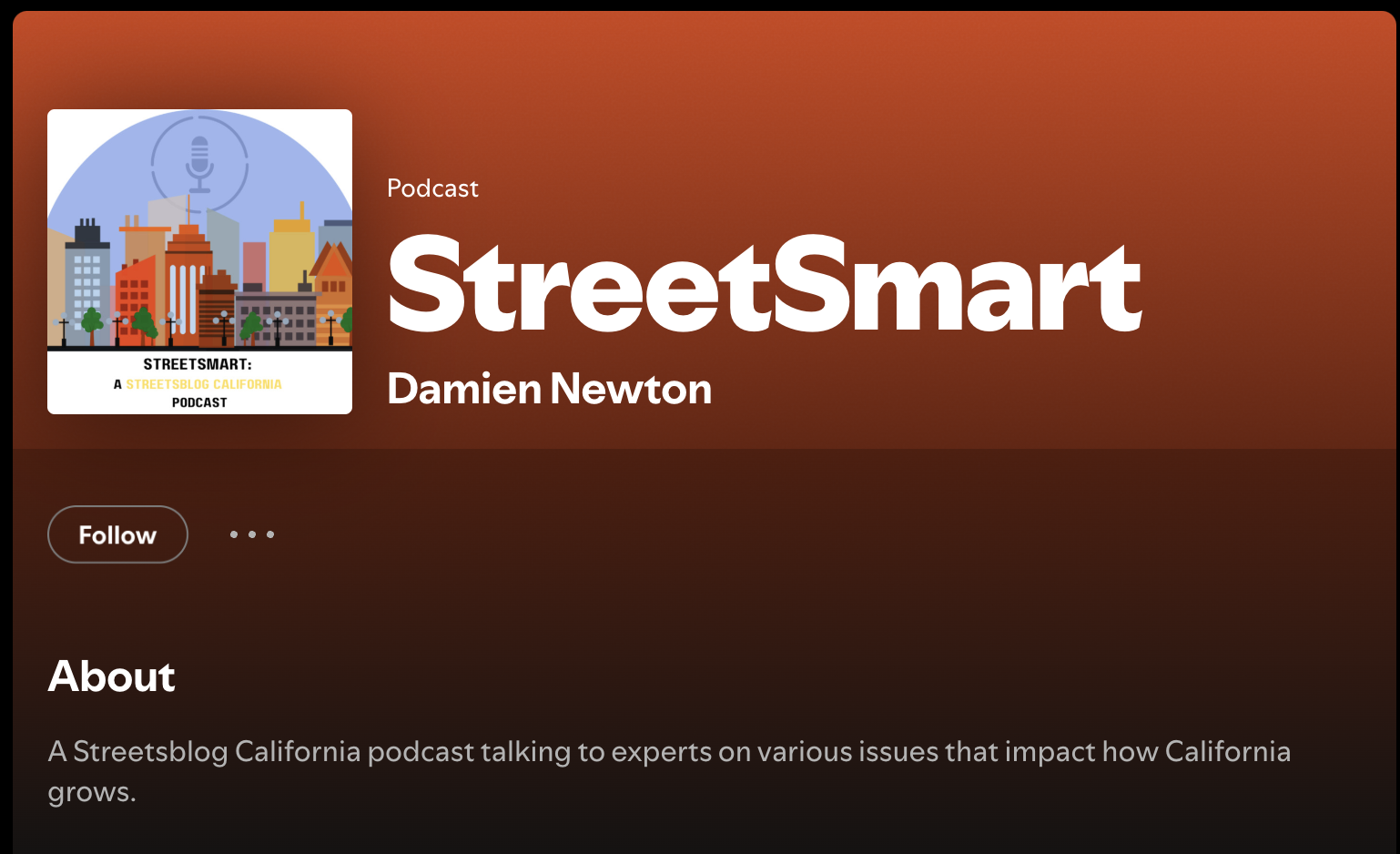Note: GJEL Accident Attorneys regularly sponsors coverage on Streetsblog San Francisco and Streetsblog California. Unless noted in the story, GJEL Accident Attorneys is not consulted for the content or editorial direction of the sponsored content.
Although A.B. 43 (adjusting the rules for setting speed limits), A.B. 917 (allowing bus agencies to use cameras to enforce no-parking rules), and A.B. 773 (allowing cities to make pandemic-era "slow streets" permanent) will not take effect until January, three L.A. city councilmembers have already introduced motions to begin work on implementing them.
The first motion [PDF], from Mike Bonin and Paul Koretz, calls on the LADOT to immediately begin identifying street segments that are eligible for speed reductions under the law, and recommend streets where reducing speed limits would promote greater public safety, particularly for people walking and biking. Priority should be given to streets with a history of fatal and severe injury collisions, according to the motion.
A.B. 43, from Assemblymember Laura Friedman (D-Glendale), allows cities to consider the safety of the most vulnerable road users -- bicycle riders and people on foot - when setting limits, which they are currently not allowed to do. It also allows cities to lower speed limits on approaches to business districts, similar to how it is done now around school sites. In addition, cities are currently required to do regular speed surveys to avoid having a street labeled as a speed trap, which would invalidate any enforcement of the speed limit there. Those speed surveys, however, have led to a steady creeping up of speed limits and the twisted outcome of setting speed limits according to how fast people drive, instead of what speed is safe. A.B. 43 extends the number of years current speed surveys are considered valid, thus - for now - avoiding those unintended outcomes.
It's likely LADOT already has a draft list of potential streets in progress; the speed limit issue has been a problem for the department for a number of years.
A second motion [PDF], from Bonin and Paul Krekorian, calls for the LADOT to report to the city council on preparations needed to begin using cameras to enforce bus-only lanes throughout the city. Until now this has not been allowed under state law, except within a few pilot programs - Muni in San Francisco has been testing the concept for a few years, and AC Transit in the East Bay has been using cameras to enforce compliance on its BRT line.
A.B. 917, from Assemblymember Richard Bloom (D-Santa Monica), authorizes all transit agencies in the state to attach cameras to transit vehicles to take pictures of license plates of cars illegally blocking both bus-only lanes and bus stops. The pictures are to be sent to law enforcement to issue citations to the car owners - after, that is, a grace period wherein drivers would receive only warnings.
Los Angeles launched bus speed improvements in 2019 as part of its NextGen Bus Plan, with new bus lanes on Flower Street, 5th Street, 6th Street, and Alvarado Street, and more planned for Grand Avenue, Olive Street, and La Brea Avenue. For the bus lanes to work, they must be free of other vehicles, particularly illegally parked cars, which has been a significant problem and a big cause of delay to bus riders.
The motion calls for the LADOT to report to the city council with a timeline, communications plan, a list of any legislative actions needed at the city level to move forward, as well as information about which bus agencies would participate.
"This rapid deployment of new bus priority infrastructure must be supported by effective enforcement to keep these lanes clear for exclusive use by buses during designated hours," wrote the councilmembers in their motion. "LADOT should work with Metro to implement the new program as quickly as possible."
A third motion [PDF] , again from Bonin and Krekorian, calls for LADOT to propose a permanent Slow Streets program, in keeping with A.B. 773 from Assemblymember Adrin Nazarian (D-North Hollywood).
"Implementing a permanent program would provide continuous and expanded opportunities for active mobility and recreation on neighborhood streets," reads the motion, and the city "should identify the necessary steps to implement these new tools in a permanent program."
Any new program should be "responsive to community-led safe streets demands, equitable in prioritizing resources for low-income communities of color and neighborhoods with less access to open space, and efficient in process and implement to reach as may neighborhoods as possible."
These three motions will be heard at the November 2 Transportation Committee hearing, chaired by Bonin.
Los Angeles is moving fast to implement these laws in part because it has been working on these issues for years, and sponsored some of the bills. Other cities may take a different approach. San Francisco Muni, for example, already uses cameras to enforce bus-lane violations, and can now use them to nab drivers blocking bus stops as well.
Is your city moving forward on any of this?






